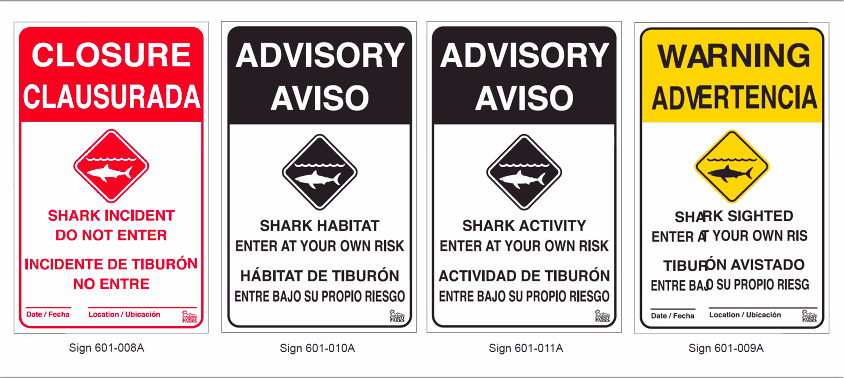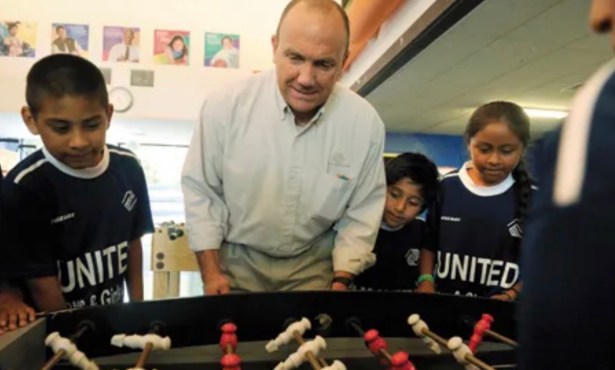Shark Lab Tags Eight White Sharks off Carpinteria’s Coast
CSU Long Beach Marine Biologist Shares Findings During UC Santa Barbara Webinar

Thanks to regulations protecting their food sources and the big fish themselves, white sharks have been growing in number over the last 50 years. So too have sightings. In fact, there’s been a fivefold increase in sightings in Southern California over the last decade, as well as an uptick in beach closures because of them. “It’s not your grandparents’ ocean anymore,” said biologist Chris Lowe in reference to a time last century when the apex predators were much fewer and farther in between.
Still, shark bites are incredibly rare, explained Lowe, director of CSU Long Beach’s Shark Lab, during a Tuesday webinar hosted by UCSB. Only two to three are recorded in California every year, despite 20 million people living and playing along the coast between Santa Barbara and San Diego alone. Because beach closures have real impacts on local economies, Lowe is working with lifeguards and parks departments to provide guidance on when and how to make those tough calls. “It should really be based on good science,” he said.
Credit: Nils Larsen
Southern California is a nursery habitat for white sharks, which span five feet at birth and stick close to shore during their first year of life to feed on stingrays and other smaller prey. Adults hang out in deeper waters to hunt for seals and sea lions, including off of the Channel Islands. For all the data Lowe and his team have (and they have a lot), they have yet to explain why the juveniles seem to pick favorite spots along the shoreline year over year. For a while, it was San Onofre and Santa Monica beaches. Now, it’s Padaro Beach in Carpinteria, where a swimmer was reportedly nipped on her foot earlier this month.
The Shark Lab operates a network of acoustic receivers to track white shark movement from Central California all the way down to Baja California and Mexico, where they migrate to breed. The scientists also maintain a data-collecting buoy off Sand Point near Padaro. They’ve tagged eight juvenile sharks in the area in recent weeks. Lowe said his team is also gathering aerial drone data to help create a predictive model for when interactions between people and sharks may be more likely. Factors include the weather, the waves, time of year, and type of beach activity, such as swimming, surfing, stand-up paddle boarding, and so on.
While the study is ongoing, Lowe said the anecdotal evidence shows that sharks generally don’t care about people. “They just swim right by,” he said. Lowe recalled a few years ago tracking 20 white shark juvies off Manhattan Beach, where more than 1,000 people enjoyed the water every day for a month. Surfers were literally sharing waves with sharks, he said, but there were no reports of bites or even bumps.
That’s not to say interactions can’t happen, Lowe went on. Swimmers and surfers ought to take common-sense precautions, like going out in pairs and keeping their eyes peeled for activity. Calm sharks cruise along with tails slowly swinging side to side. An aggressive one will dart and circle. “It doesn’t mean the shark is going to attack,” Lowe said, “but it’s telling you to back off.” If you’re keeping track of one and lose it, it’s probably behind you, Lowe said. Sharks are stealth predators and look for the element of surprise.
But remember, Lowe said, that the sharks we see off Santa Barbara County’s beaches are almost always young ones not hunting for big meals, even if they look scary to us. “A 10-footer is still a toddler,” he said.
At the Santa Barbara Independent, our staff is working around the clock to cover every aspect of this crisis — sorting truth from rumor. Our reporters and editors are asking the tough questions of our public health officials and spreading the word about how we can all help one another. The community needs us — now more than ever — and we need you in order to keep doing the important work we do. Support the Independent by making a direct contribution or with a subscription to Indy+.



